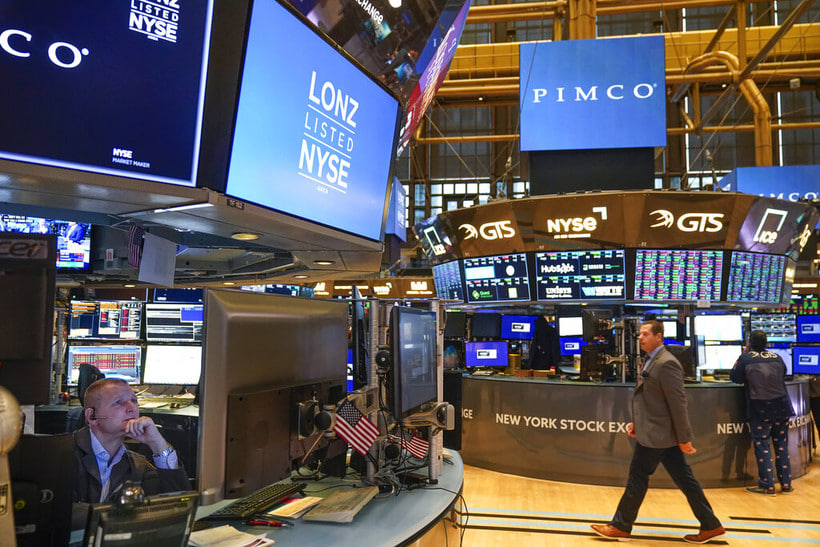AMD's Nasdaq-100 Removal: A Deep Dive into Market Implications
Meta Description: AMD stock plummets after Nasdaq-100 removal; analyzing market reactions, implications for investors, and future predictions for AMD and the Nasdaq-100 index. #AMD #Nasdaq100 #StockMarket #Investment #AMDstock
Wow! The market's been buzzing lately, and the recent shakeup in the Nasdaq-100 index has sent shockwaves through the investment world. Specifically, Advanced Micro Devices (AMD), a titan in the semiconductor industry, has been ousted from the prestigious index. This isn't just another day at the office; this is a major event with far-reaching consequences for investors, analysts, and AMD itself. This isn't just about numbers on a screen; it's about the future of a tech giant and the ripple effects it creates across the entire market. Buckle up, because we're diving deep into the details, examining the reasons behind this surprising move, the immediate market reactions, and what this all means for the long-term prospects of AMD. We'll unravel the mystery behind the index adjustments, giving you a thorough, unbiased perspective backed by insightful analysis and real-world experience. This isn't your average financial news report; it's a comprehensive, human-centric exploration of the implications and what you, the savvy investor, need to know. Get ready to arm yourself with knowledge and navigate these market waters with confidence. So, whether you're a seasoned pro or just starting out, this analysis will empower you to make informed decisions. Let's get started!
AMD's Removal from the Nasdaq-100: What Happened?
The news hit like a bombshell: AMD, a company synonymous with innovation in the CPU and GPU markets, was removed from the Nasdaq-100 index. This wasn't a small tweak; it was a significant reshuffling of the deck, impacting not just AMD's stock price, but also the overall composition of one of the world's most closely watched technology indices. The announcement, made by Nasdaq in December, sent ripples through the financial markets. The immediate reaction? AMD's stock price took a significant hit, plunging over 10% in the opening minutes of trading. Ouch! This dramatic drop highlighted the index's significant influence on investor sentiment and trading activity. It's a stark reminder that even established companies aren't immune to the forces of the market.
But why the removal? Nasdaq conducts annual reviews of its index components, adjusting based on factors like market capitalization and overall market performance. While the exact criteria aren't publicly detailed, it's clear that AMD's position within the top 100 non-financial companies listed on Nasdaq had shifted. This isn't necessarily a reflection of AMD's underlying business performance; it's simply a consequence of the dynamic nature of the market and the constant reshuffling of the pecking order. Think of it like a highly competitive sports league – some teams rise, others fall, and the lineup is constantly being revised.
This adjustment, while seemingly technical, carries substantial weight. Many passively managed funds and ETFs track the Nasdaq-100, meaning they're forced to rebalance their holdings to reflect the changes. This forced selling contributed to the initial price drop, as funds sold off their AMD shares to re-align with the new index composition. It's a classic case of supply and demand at play, amplified by the sheer size of the funds involved.
Market Reactions and Analysis
The immediate market reaction to AMD's removal was, as expected, quite dramatic. The stock took a significant dive, reflecting both the direct impact of index fund rebalancing and investor sentiment. Many interpreted the move as a negative signal, even though it's crucial to remember that it doesn't necessarily reflect AMD's intrinsic value or future prospects. This demonstrates the power of perception in the market. Sometimes, the narrative surrounding an event can outweigh the underlying fundamentals.
However, the broader market didn't experience a catastrophic meltdown. Other tech stocks largely held steady, indicating that the impact was largely contained to AMD and those directly impacted by the index rebalancing. This suggests that the overall market sentiment remained relatively robust, despite the news. Interestingly, companies added to the Nasdaq-100, like Palantir, MicroStrategy, and Axon, saw their stock prices surge, highlighting the "winner-takes-all" nature of index adjustments.
It's important to view this event within the broader context of the tech market. The sector has experienced periods of both intense growth and significant volatility. AMD's position within the market is constantly evolving, influenced by factors like competition, technological advancements, and macroeconomic conditions. Therefore, any analysis must consider these broader forces at play.
Long-Term Implications for AMD
So, what does this all mean for AMD's long-term outlook? Honestly, the removal from the Nasdaq-100 is unlikely to significantly alter AMD's fundamental business prospects. It's a short-term market event, not a death knell. The company's success will continue to hinge on its ability to innovate, compete effectively, and deliver strong financial performance. Things like their product roadmap, market share, and overall profitability remain the key determinants of its future success. The index change is more of a cosmetic adjustment than a fundamental shift in the business landscape.
That said, the short-term market reaction will undoubtedly have some impact. The initial price drop could affect investor confidence, and it might make it slightly more challenging to attract new investments in the short term. However, for investors with a long-term perspective, this might be an opportunity to acquire shares at a potentially discounted price. This is why it's crucial to rely on fundamental analysis rather than reacting solely to short-term market fluctuations. It's all about the long game!
The Nasdaq-100 Rebalancing: A Deeper Look
The Nasdaq-100 is more than just a collection of stocks; it's a benchmark index that shapes investment strategies and reflects the performance of the leading non-financial companies on the Nasdaq exchange. Annual rebalancing is vital because it ensures the index remains representative of the market's leading players. Companies are added and removed based on a complex algorithm considering factors like market capitalization, liquidity, and financial health. This year's changes reflect the ever-shifting landscape of the tech industry, with some companies experiencing rapid growth and others facing headwinds.
The criteria for inclusion and exclusion are not publicly disclosed in full detail; however, factors like market capitalization, trading volume, and financial stability are heavily weighted. It's a dynamic process that aims to ensure the index remains a relevant and accurate reflection of the tech market's leading forces. Remember, this isn't a judgment on the individual companies; it's simply a mechanism for maintaining the index's representativeness. The algorithm does its job, but the human element – our interpretation of the movements – can lead to interesting market reactions.
This entire process highlights the importance of understanding the mechanics behind major indices like the Nasdaq-100. These indices aren't static; they evolve to reflect the ever-changing dynamics of the market. Staying informed about these changes is crucial for making informed investment decisions.
Frequently Asked Questions (FAQs)
Q1: Is AMD's removal from the Nasdaq-100 a sign of impending failure?
A1: Absolutely not! The removal doesn't reflect AMD's inherent business health. It's a consequence of the index rebalancing process, based on factors unrelated to the company's fundamental performance.
Q2: How does this affect my investments in AMD ETFs or mutual funds?
A2: If you hold ETFs or mutual funds that track the Nasdaq-100, your holdings will automatically adjust to reflect the change. You won't need to take any action.
Q3: Should I sell my AMD stock after this news?
A3: This depends entirely on your investment strategy and risk tolerance. The removal from the index is a short-term market event. Long-term investors might see this as a buying opportunity. Conduct your own thorough research before making any decisions.
Q4: What other factors influence the Nasdaq-100 composition?
A4: Besides market capitalization, liquidity, and financial health, factors such as sector representation and overall market stability play a significant role in the index's composition.
Q5: Will AMD ever return to the Nasdaq-100?
A5: It's certainly possible. The index composition changes every year, and AMD could regain its position in the future based on its performance and market capitalization.
Q6: What can I learn from this event about market dynamics?
A6: This event highlights the importance of understanding index rebalancing, the impact of passive investing, and the difference between short-term market fluctuations and long-term fundamental strength.
Conclusion
AMD's removal from the Nasdaq-100 was a significant market event, triggering a noticeable drop in its stock price. However, it's crucial to view this event in perspective. The removal is primarily a consequence of the index's annual rebalancing process, not a reflection of AMD's underlying business health. Investors should focus on the company's long-term fundamentals and overall performance rather than reacting solely to short-term market volatility. This event underscores the importance of understanding index mechanics, market dynamics, and the need for a long-term investment strategy. Stay informed, stay adaptable, and navigate these market currents with confidence. Remember, the market is a rollercoaster, but with careful planning and research you can make informed decisions and ride the waves.



